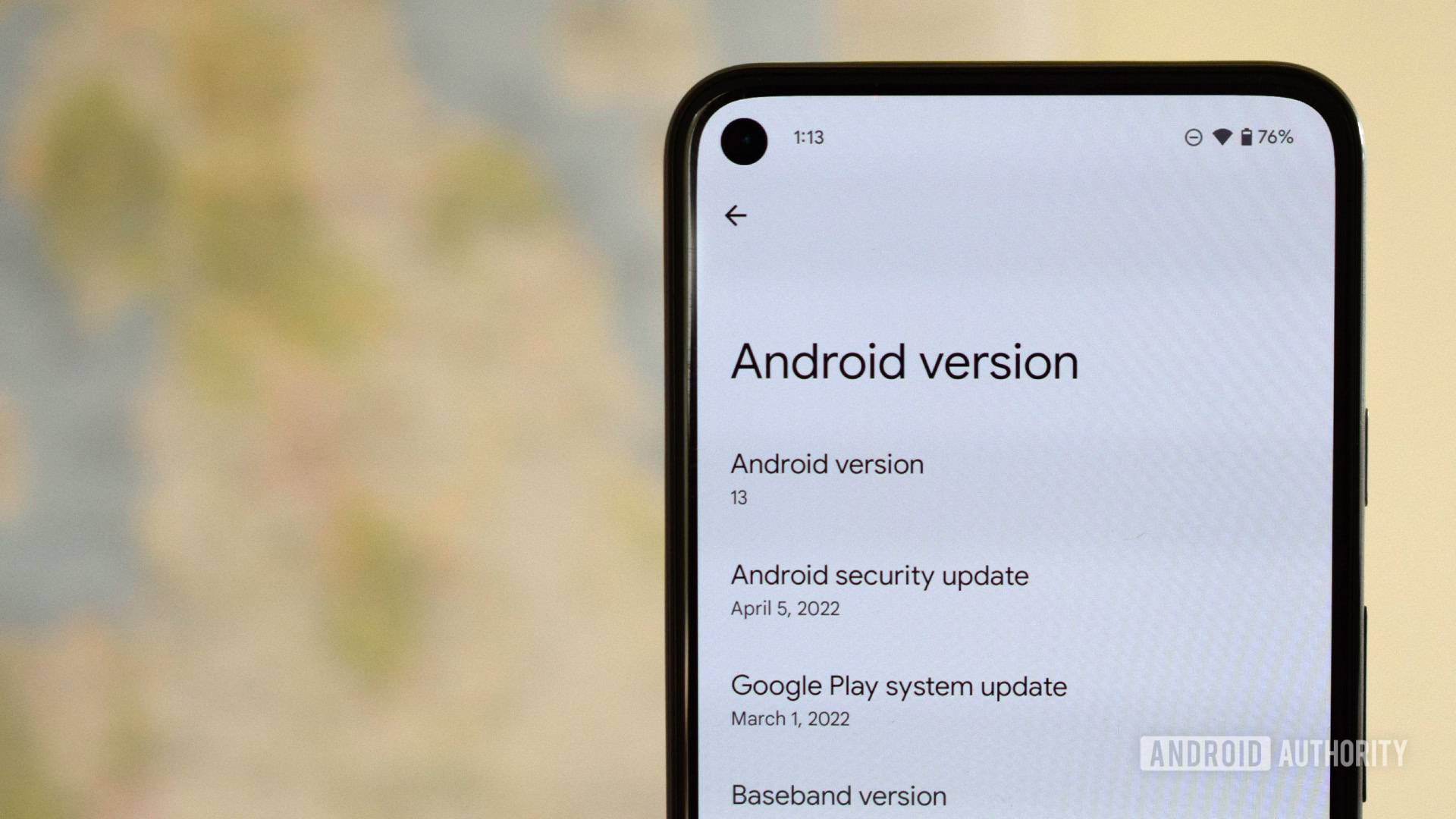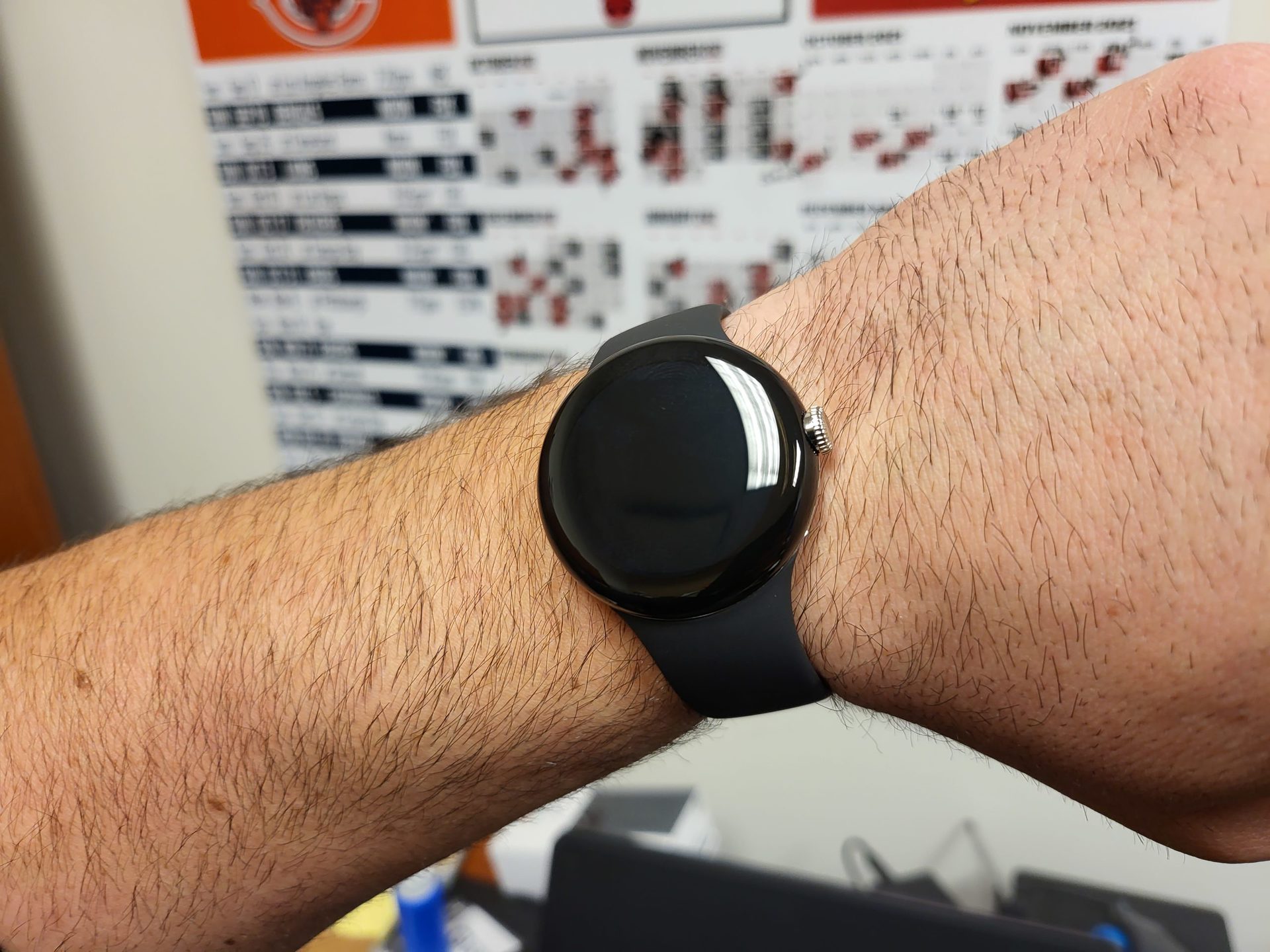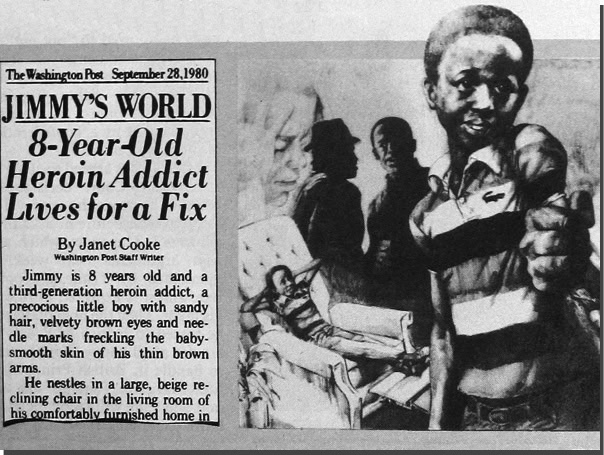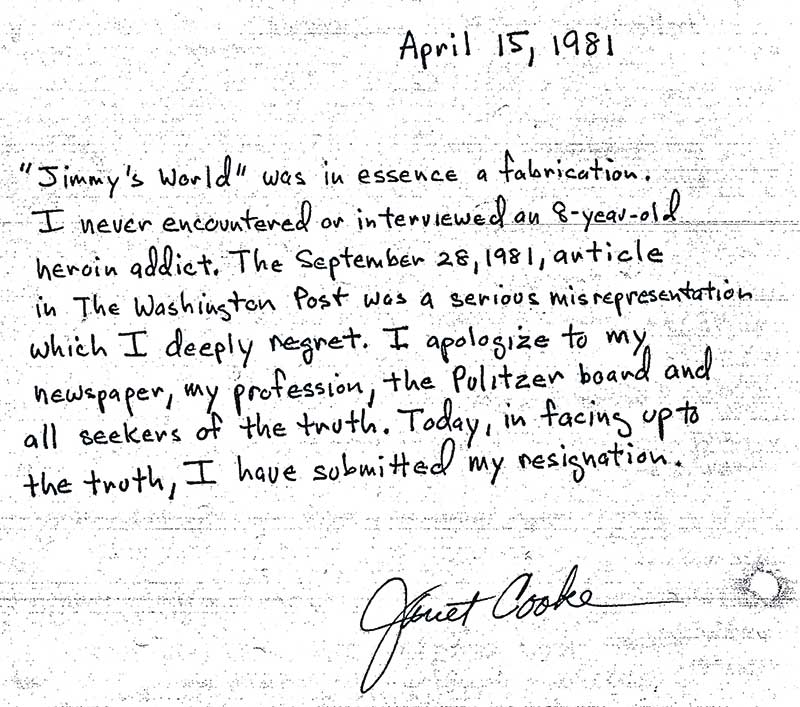⚡ Welcome to The Weekly Authority, the Android Authority newsletter that breaks down the top Android and tech news from the week. The 192nd edition here, with Android 13’s public beta, Musk’s Twitter purchase, Sony’s subscription stacking clamp down, and more…
???? I’m enjoying the UK’s long Mayday weekend — hoping for some sunshine so we can have ice cream at the beach!
Popular news this week

Robert Triggs / Android Authority
Google:
Samsung:
OnePlus:
Apple:
Twitter:
- Elon Musk will officially buy Twitter: For $44 billion, and it’s unclear how this will affect Twitter in the short-term and long-term.
- Also, cybersecurity experts say Twitter could be more vulnerable to attack if Musk’s idea to make its tech open-source goes ahead, not to mention privacy concerns. Musk would potentially owe Twitter $1 billion if the deal falls through…
- Plus, Musk’s ideas for increasing Twitter profits could involve monetizing your Tweets, and increasing celebrity interaction.
Space:
Elsewhere:
- Entire Android industry can’t compete with Apple’s growth last quarter: Every Android manufacturer lost market share in Q1 2022.
- Hackers successfully duped Google, Apple, and others into giving up user data.
- Sony announced an Xperia event for May 11: Xperia 1 IV likely coming next month.
- And Amazon Prime Day’s coming in July, date to be confirmed.
- Huawei Mate XS 2 launched Thursday, the first out-folding design we’ve seen in some time, with a Snapdragon 888 4G Soc, 7.8-inch 120Hz foldable OLED display that folds to a smaller 6.5-inch 19:9 screen, and 4,600mAh-4,800mAh battery depending on model, but China-only for now.
- Vivo X80 series announced: Evolution, not revolution? A China-only release for now.
- Poco F4 GT launched: The best gaming phone on the market?
- The Huawei Band 7 and Watch GT 3 Pro launched too.
- And Honor grabbed the top spot in the Chinese phone market, unexpectedly, up from 5% market share a year ago.
- Plus, someone may have found Xiaomi’s next foldable phone hidden in MIUI code…
- Meanwhile, Snap’s tiny little camera drone Pixy, which ties in with Snapchat, launched for $230, only in the US and France.
- A change to WhatsApp disappearing messages is another reason to use Signal: WhatsApp will let users save disappearing messages, undermining privacy.
- Looks like across-the-room wireless charging products might not be coming this year after all: Belkin casts doubt on future release schedule for the chargers, which will use IR beams to “beam” power straight to a device from a power node in another location in the room.
- Wow: Japanese railroad builds giant gundam-style robot to fix power lines, controlled by VR.
Movies/TV:
- The Tokyo Vice season finale aired on Friday, so while we anxiously wait to hear if there’ll be a season 2, check out the true story of Jake Adelstein. If you haven’t seen the show, catch season 1 streaming on HBO Max now.
- The 13 best Nicolas Cage performances (and where to watch them), including Leaving Las Vegas, Face/Off, and more.
- Mashable’s review on The Man Who Fell to Earth is in: does justice — and then some — to the source material.
- Nintendo’s delayed its Super Mario movie to April 2023, but it’ll be worth the wait, apparently.
- And Netflix drops trailer, launch date for Money Heist Korean remake: June 24.
- Here’s what’s new on Netflix in May: Stranger Things season 4 (!), The Lincoln Lawyer, and a new Mike Myers comedy series.
- CNN Plus shut down two days earlier than planned on April 28.
- Missing Severance? Check out these 15 revelations from ‘Severance’ creator Dan Erickson’s Reddit AMA.
- Or check out the best new streaming movies this week, from queer teen drama Crush to Wong Kar-wai’s Chungking Express.
Gaming:
- Blizzard will reveal the first Warcraft mobile game on May 3, at 10 AM PT.
- Ubisoft shuts down online services for 91 games across multiple console and PC platforms, including Just Dance, Splinter Cell, Far Cry 2, and more.
- Sega’s pulling standalone Sonic games ahead of Sonic Origins’ arrival.
- And as Apple threatens to remove games that haven’t been recently updated from its store, devs are up in arms.
- Meanwhile, Sony’s building a game preservation team to keep old games alive.
- Speaking of Sony, it’s reportedly requiring some developers to create two-hour trial versions of their games as preparation for the upcoming PS Plus Premium subscriptions: will only apply to new games with a wholesale cost of $34 or more and isn’t retroactive.
- And Sony’s also clamping down on PlayStation Now subscription stacking to protect its upcoming Premium service: if you’re already subscribed, you’ll need to wait until June to redeem pre-paid cards.
- PlayStation Plus’ May games are Tribes of Midgard, Curse of the Dead Gods, and FIFA 22.
- Speaking of demos: The annual Tribeca Festival will feature a selection of games remote attendees can play online, including demos for Plague Tale: Requiem and Oxenfree II: Lost Signals — tickets on sale May 2.
- And PAX East’s over for another year: Here are some of Ars Technica‘s favorite games from the event.
- Meanwhile, an Elden Ring VR mod is coming, and PC Gamer has some footage.
- And Vampire Battle Royale: Bloodhunt is free on PlayStation 5 now, unavailable anywhere else until October 2023.
- Finally: Nintendo Switch Sports landed and reviews are in.
Reviews

Eric Zeman / Android Authority


This week, settle in for a bit of a long read.
I’ve just finished listening to the podcast Hoax’s episode “Jimmy’s World,” about 26-year-old Pultizer Prize-winning (and losing) Washington Post reporter Janet Cooke. In case you haven’t heard of her, her story’s a pretty interesting one.
- On September 28, 1980, Washington Post readers were greeted with artwork for a story entitled “Jimmy’s World.”
- The story’s subtitle: “8-Year-Old Heroin Addict Lives For a Fix” made waves throughout the country.
- But it later became one of the largest journalism scandals of all time, something that we like to think wouldn’t happen today, with all the technology we have at our disposal for fact and background checking…
From the original article:
“Jimmy is 8 years old and a third-generation heroin addict, a precocious little boy with sandy hair, velvety brown eyes, and needle marks freckling the baby-smooth skin of his thin brown arms.
He nestles in a large, beige reclining chair in the living room of his comfortably furnished home in Southeast Washington. There is an almost cherubic expression on his small, round face as he talks about life — clothes, money, the Baltimore Orioles, and heroin. He has been an addict since the age of 5.”
Shocking. But was any of it true?
Who was Janet Cooke?

Janet Cooke had worked as a reporter for The Toledo Blade for a little over two years when she wrote to executive editor Ben Bradlee, enquiring about a job at The Washington Post, attaching her resume and six articles she’d written for The Blade.
- Bradlee was impressed that Cooke was a Phi Beta Kappa graduate of Vassar in 1976 and offered her an interview.
- Two weeks later, Cooke impressed everybody she met. She was an articulate, well-dressed, striking black woman who seemed ideal for the job, particularly given the pressures to hire women and minorities.
- Cooke started work at The Post on January 3, 1980.
- Everyone had been so impressed by her, that nobody could really remember carrying out anything more than a cursory check of her references.
Cooke began working for The District Weekly under Vivian Aplin-Brownlee.
- Cooke wrote her first byline two weeks after she was hired — a story about a black beauty contest.
- It wasn’t until February 21 that her first major article was published — a story about Washington’s drug-infested riot corridor, thrusting Cooke firmly into the drug reporting scene.
- Cooke went on to write 52 more stories before “Jimmy’s World.”
- But behind the scenes, she was known for her dramatic flair. She was conspicuous, wearing designer clothes and “consumed by blind and raw ambition.”
- She even told others of her ambitions to win a Pulitzer Prize in three years and to be on the national staff in three to five years.
The story itself
Aplin Brownlee had heard talk of a new type of heroin on the streets. Cooke was sent to look into it, interviewing drug rehabilitation experts and social workers about heroin abuse in Washington.
- Cooke amassed two hours of tape-recorded interviews and 145 pages of handwritten notes, which landed on the desk of Milton Coleman, who’d worked at the Post since May 1976 and had taken over the City desk on May 26, 1980.
- By this point, heroin stories were running regularly, but when Cooke talked over the material with Coleman and mentioned an 8-year-old addict, he immediately knew it was a front-page story.
Cooke supposedly went on to have dinner with the heroin addict’s mother and visited their house, but nobody asked the boy’s or family’s name or address, and Cooke was promised confidentiality for her sources. She even claimed to have been threatened at knifepoint by the boy’s stepfather, and was sent to stay with another Post employee for two nights after the story was published.
The story’s details were extensive, with the first draft coming in at 13.5 pages long, describing the child, his clothes, and the family home in great detail. Somewhere along the way, everybody assumed Coleman knew who the kid was, but nobody ever asked about him.
- When the story was published on Sunday, September 28, 892,220 copies of the paper ran “Jimmy’s World” on the front page.
- Unlike today, when we could easily use the latest tech to check references, verify sources, and find out where this family lived, in the 1980s this was all taken at face value. There was no reason to debate whether this well-written story was true.
- Readers were outraged and wondered what was being done to find the boy. The story was sent to Nancy Reagan, the nation’s first-lady-t0-be, and letters came from all over the country demanding the police take action.
- Washington Police Chief Burtell Jefferson launched a citywide search for “Jimmy” the day after publication, offering a reward of up to $10,000.
There’s a lot more to the story than we can get into here, but the podcast episode is the best place to dive deep…
Uncovering the hoax

- One person never believed the story: Vivian Aplin-Brownlee said, “I never believed it, and I told Milton (Coleman) that. I knew her so well and the depth of her. In her eagerness to make a name she would write farther than the truth would allow.”
- Others, including Coleman and Woodward, never doubted Cooke, even following another of her sensational stories about a 14-year-old prostitute.
- When the paper was threatened with legal action, Coleman decided to visit Jimmy’s home with Cooke. A day later, Cooke claimed she’d gone to the house alone and found it vacant: the family had supposedly moved to Baltimore.
- On April 13, 1981, Cooke was awarded the Pulitzer Prize for Jimmy’s World.
It seemed Cooke had committed the perfect crime until she was exposed just two days later. After the editors of the Post discovered Cooke had lied about her academic credentials, they demanded proof of Jimmy’s existence.
On April 15, in an interview with David Maraniss, Cooke finally admitted that her story was fictitious and offered her resignation.
The Post, humiliated, returned the Pulitzer.
Tech Calendar
- May 3: Blizzard reveals first Warcraft mobile game @ 10 AM PT
- May 9-11: Qualcomm 5G Summit (San Diego)
- May 11: Sony Xperia event @ 3 AM ET (Xperia 1 IV?)
- May 11-12: Google I/O 2022
- June 6-10: Apple WWDC 2022
Tech Tweet of the Week
Enjoy the spring weather!
Paula Beaton, Copy Editor.

